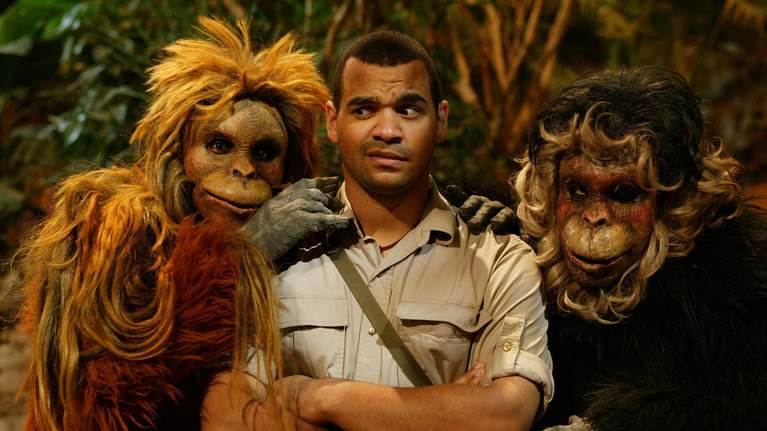In a few months time, UK kids channel CITV will cease operations, dealing a crushing blow to people in their 30s. And ITV is not the only broadcaster grounding their children’s brands; Disney closed its linear channels in 2020, while the closure of CBBC has also been timetabled.
Sad as CITV’s demise might be to millennials with fond memories of Jungle Run and My Parents Are Aliens, children themselves probably won’t notice. Less than half of 3-17 year olds actually watch live TV, according to research published by Ofcom last year, and broadcasters are simply following the latest youth trends.
Although kids are predominantly fleeing to SVOD giants Netflix and Disney+, almost half watch BVOD services, such as BBC iPlayer and (at the time of the Ofcom report) ITV Hub. It tracks then that ITV is migrating its children’s content to its new streaming service, with ITVX Kids launching in July. CBBC will also become iPlayer-only, and Disney’s linear content moved to Disney+ during the pandemic.
Coinciding with that exodus from linear is a shift away from the TV set; Ofcom found that 81 percent of children watch TV content on other devices, including tablets, phones and laptops. This trend reflects the increasingly individual viewing experience for children with access to online content, especially once you start factoring social media channels.
“Online access for children – and in particular each having their own device – has completely pummeled TV as a sit-down-in-front-of destination under the eye of Mum in the kitchen,” says Alice Enders, Head of Research at Enders Analysis, “in favour of first YouTube (you may recall the wild popularity of box opening videos) and now TikTok.”
Cut it out
With that fall in linear viewing comes a decline in advertising, exacerbated by the current economic climate; ITV’s ad revenues dropped last year, and the commercial broadcaster anticipates a double-digit dive for the start of 2023. But ad restrictions on UK kids TV adds another layer of complexity, as high in fat, salt or sugar (HFSS) products are banned from advertising on shows for (or largely watched by) children.
The policy has been criticised by advertising trade bodies who argue it has no real impact on childhood obesity, while health organisations claim that children are still seeing HFSS ads – hence an incoming expansion of the ban to cover all pre-watershed TV. Channel 4 COO Jonathan Allan has suggested the extension will cost the TV industry £200 million in revenues, and ITV CEO Carolyn McCall said it will force broadcasters to cut content.
So while not directly responsible for the closure of commercial kids channels (the initial ban has been in place since 2007), the impact of the restrictions on content spend is hard to deny. In the 10 years following the ban, public service broadcaster (PSB) investment in children’s programming fell by nearly 40 percent, according to Ofcom. By 2017, just 1 percent of programming on CITV was original UK content, revealing how much of it HFSS advertising was actually funding.
This is supported by the BBC (unaffected as it is by advertising laws) remaining “the most significant player in terms of investment and hours across all children’s genres”, as Ofcom explains. But the BBC is far from immune, and the government’s decision to freeze the licence fee – along with axing the £44 million Young Audiences Content Fund – has put CBBC in the firing line.
“ITV has gradually reduced its investment in original children’s programming over the years,” comments Tim Westcott, Senior Principal Analyst at Omdia. “This has, no doubt, helped to speed the decline in viewing. But children’s ITV has been a loss-maker for years.”
Food for thought
Fuelled by the HFSS restrictions, those cuts have accelerated the inevitable transition of young viewers to streaming services – after all, what is there keeping anyone watching linear TV when the same (and more) content is available elsewhere and on-demand?
But the regulation applies to streaming companies as well, and the new rules will additionally cover all online advertising. Paul Coster, founder and CEO of VOD365 – an AVOD company that runs kids brand Ketchup TV – says children’s content is “not necessarily” easier to monetise in streaming environments compared to linear. “Particularly in the FAST (free ad-supported streaming TV) space, monetisation of kids inventory is proving to be more challenging,” not least because of the HFSS regulation.
And while the individual viewing experience creates greater opportunities for targeting, online environments come with their own set of child safety concerns. “Kids like seeing relevant toy ads as opposed to generic and in some cases inappropriate ads on services such as YouTube,” notes Coster.
Indeed, research by the Advertising Standards Authority (ASA) revealed the risk of children being served age-inappropriate ads on platforms such as YouTube and Instagram. “Undoubtedly YouTube plays a big role when it comes to video consumption for kids content, but problems come once viewers are drawn into the vortex of the YouTube algorithm,” adds Coster. TikTok is also notable for its algorithmic appeal to kids, as Ofcom reported: “The automatic serving of content in TikTok was also appealing, as it removed the need for the participants to make any decisions.”
As kids TV grows into its new home, lawmakers will have to strike a balance between ensuring kids content is both monetisable and safe. “The dual threat of digital content and advertising legislation has proven to be a death knell for professionally made children’s programming,” says Phil Smith, Senior Researcher at market research firm Opinium. “We know from our research that digital reach isn’t absolute, and parents are legitimately concerned about the lack of linear TV for kids moving forward.”





